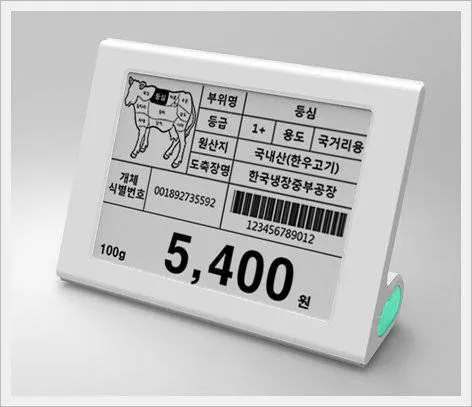In the ever-evolving landscape of retail, technology continues to play a pivotal role in shaping the way consumers interact with products. One of the latest innovations making waves in the industry is the advent of electronic labels, commonly known as e-labels or digital shelf labels. These electronic tags, seamlessly integrated into store shelves, are revolutionizing the shopping experience for both consumers and retailers alike. Unlike traditional paper labels, electronic labels are dynamic and can be easily updated in real-time, allowing for greater flexibility in pricing, promotions, and product information. This not only streamlines the management of inventory and pricing strategies for retailers but also provides consumers with accurate and up-to-date information at their fingertips. The primary advantage of electronic labels lies in their ability to bring a new level of efficiency and agility to the retail environment. Retailers can remotely update pricing information, promotions, and product details across the entire store with a few clicks, eliminating the need for manual label changes and reducing the risk of errors. This dynamic pricing capability enables retailers to respond quickly to market changes, implement time-sensitive promotions, and optimize pricing strategies to maximize sales.
 Moreover, the elimination of paper waste associated with traditional labels aligns with sustainability initiatives, making electronic labels an eco-friendly solution. From a consumer perspective, electronic labels enhance the shopping experience by providing real-time information and a more interactive interface. Shoppers can easily access detailed product descriptions, nutritional information, and customer reviews by simply scanning the electronic label with their smartphones. This not only empowers consumers to make informed purchasing decisions but also creates a more engaging and personalized shopping experience. For example, retailers can use electronic labels to display QR codes that link to recipe ideas, allowing shoppers to discover new ways to use products and encouraging cross-selling. Additionally, electronic labels contribute to a more visually appealing and organized store layout.
Moreover, the elimination of paper waste associated with traditional labels aligns with sustainability initiatives, making electronic labels an eco-friendly solution. From a consumer perspective, electronic labels enhance the shopping experience by providing real-time information and a more interactive interface. Shoppers can easily access detailed product descriptions, nutritional information, and customer reviews by simply scanning the electronic label with their smartphones. This not only empowers consumers to make informed purchasing decisions but also creates a more engaging and personalized shopping experience. For example, retailers can use electronic labels to display QR codes that link to recipe ideas, allowing shoppers to discover new ways to use products and encouraging cross-selling. Additionally, electronic labels contribute to a more visually appealing and organized store layout.
The clean and sleek design of digital electronic shelf labels eliminates the clutter associated with paper labels, creating a modern and sophisticated shopping environment. The aesthetic appeal of electronic labels can enhance the overall brand image of a store, attracting tech-savvy consumers who appreciate innovation and a seamless shopping experience. While the initial implementation cost of electronic labels may be a consideration for retailers, the long-term benefits in terms of operational efficiency, sustainability, and enhanced customer experience make them a worthwhile investment. As technology continues to advance, we can expect further integration of smart features into electronic labels, such as RFID technology for enhanced inventory management and analytics capabilities for better insights into consumer behavior. In conclusion, electronic labels are not just changing the way products are priced and displayed; they are transforming the very essence of the shopping journey, ushering in a new era of convenience, sustainability, and innovation in retail.